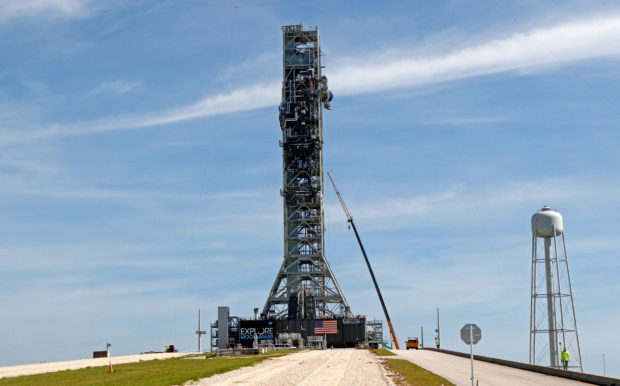
File photo shows NASA’s Space Launch System mobile launcher atop Launch Pad 39B for months of testing before it launches the SLS rocket and Orion spacecraft on mission Artemis 1 at the Kennedy Space Center in Cape Canaveral, Florida, U.S., July 1, 2019. REUTERS/Thom Baur
NASA on Thursday completed an eight-minute test of engines on a Boeing-built rocket for Artemis missions that aim to return U.S. astronauts to the moon by 2024, more than half a century since the last lunar walk.
NASA conducted Thursday’s hot fire test of the core stage of the Space Launch System (SLS) rocket to simulate a launch by firing the engines while anchored to a tower at its Stennis Space Center in Mississippi.
The four RS-25 engines roared to life for the full duration of the test and filled the surrounding area and sky with clouds of white smoke. After the engines cut off, NASA employees could be heard applauding on the space agency’s live-streaming video.
A previous test in January ended after about a minute – well short of the roughly four minutes engineers needed to gather enough data.
NASA aims to return U.S. astronauts to the moon by 2024 but the SLS program is three years behind schedule and nearly $3 billion over budget. The last astronaut to walk on the moon was Eugene Cernan in December 1972.
The Space Launch System is now expected to go to the Kennedy Space Center in Florida for integration with Lockheed Martin Corp’s Orion spacecraft.
The hot fire is the eighth and final test of the Green Run series to ensure the core stage of the SLS rocket is ready to launch Artemis missions to the moon. Artemis I is scheduled in November to orbit the moon with an uncrewed spacecraft but that date is likely to change.
Elon Musk’s SpaceX and Jeff Bezos’ Blue Origin are racing to send their own crewed missions to space for the first time.